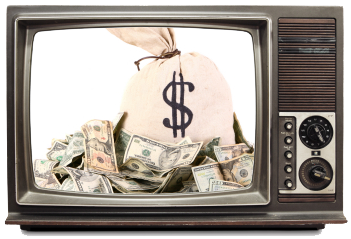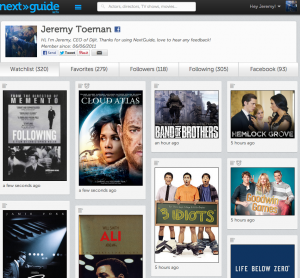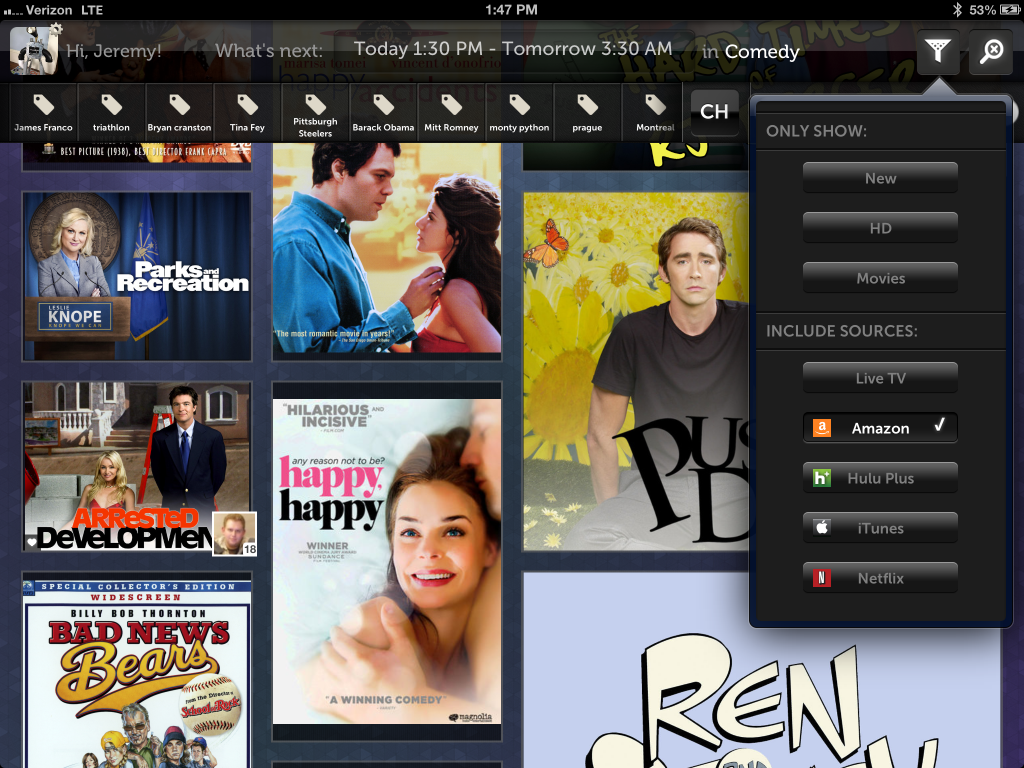 The topic of cord cutting is always an interesting one, one that waxes and wanes across technology and media outlets over time. In all cases, there are compelling arguments for cord cutting, and just as compelling ones against it. I thought I’d opine a little on the topic.
The topic of cord cutting is always an interesting one, one that waxes and wanes across technology and media outlets over time. In all cases, there are compelling arguments for cord cutting, and just as compelling ones against it. I thought I’d opine a little on the topic.
1) Cord cutting is undeniably on the rise. But how much is the real question. First, it’s important to acknowledge this is after the longest run of cable sub GROWTH we’ve ever seen. We hit the peak last year , and are now backing down to some other plateau – but i’m far from convinced we’re heading to an abysmal valley. We might see decline continue for several quarters, but realistically – the rate of decline is virtually meaningless against the business operations of most Pay TV providers.
2) How economic recovery is a factor. This may sound counterintuitive, but I believe much of the decline in subs is related to post-recession recovery – yes, recovery. The #1 thing people spend money on in bad times is home entertainment – its much cheaper to go up to a premium cable package than go to the movies. Now that the economy is doing better, people are reallocating their spend, and choosing to be entertained outside of the home.
3) Cord cutting isn’t inherently disruptive, but it could tangentially be part of a massive change in the industry. Here’s a “major impact” possible outcome: breakdown of geographic/regional MSO barriers. Traditionally the only way for a Pay-TV Provider like Comcast/TWC to expand was via acquiring local providers (of which there are still ~12000 in the US alone, jfyi). As we see these companies increasingly offer TV Everywhere and app-based offerings (on Apple TV, Roku, Smart TVs, iPads, and Web Browsers), it *must* be tempting for them to start figuring out how to legally encroach without boundaries. I believe this must happen over time, and will be the “singularity” that most disrupts the ecosystem as it exists today.
4) Awesome hype: I was recently discussing cord cutting with a reporter, and one thing that emerged from the conversation is the realization that nobody in the media is going to write a blog post/article entitled “TV: Doing Great!”. It’s not interesting, not dramatic, and wouldn’t get page views – therefore isn’t news. But to be the canary in the coal mine – now that’s enticing! So we have a heap of prominent news outlets with articles written by people who don’t necessarily fully get the industry they are writing about (no offense intended – this is one of the most complicated industries to even attempt to understand!) AND are *incentivized* to write dramatic/sensational headlines. “Death of TV” is a good one, “Nobody’s Cord Cutting At All” is not.
5) Live TV is well-loved, and awesome – even if you don’t watch it. I find an amazing correlation between people who believe cord cutting is huge and also think everybody in the world has seen House of Cards, and in fact they all watched it opening weekend. It leads to a terrible bias about how individuals perceive most TV audiences, which are nowhere near accurate. The truth in TV watching comes down to this: even in households WITH DVRs (not the majority of US homes, btw), over 50% of TV watching is done live. Now I personally cannot fathom that behavior, nor the desire to watch 4.5+ hours per day of TV – but it’s still more accurate than someone like myself, who watches virtually everything on my own schedule (and device of choice).
6) MSOs will do just fine even if cord-cutting emerges more significantly. These companies have spent a few decades with a lot of CapEx which has now enabled them to create new value-added services. Voice, for example, became a multi-billion dollar business for Comcast, with NO SIGNIFICANT investment whatsoever. Now they are looking toward: Home Security, Home Automation/Monitoring, increased Communications, etc. The revenue that fades (if any) from TV will shift to Internet and other value-added services.
7) The real damage is to Broadcast Networks. If you really want to analyze the business impact, it’s essential understand the revenue flow and content itself. Even in a cord-cutters utopia, with all of everything available fully on demand (and free, if I get them right), the content is still king. So in this utopia, however the business model works, it seems like the companies whose role is buying shows and distributing them to cable networks will need to find a new raison d’etre. We’ll still need Internet, and we’ll still want stuff on demand – those two functions alone necessitate a service provider.
8. Cord Cutting Paradise might really be more Hellish. Pretty much every analysis on the topic shows that a la carte pricing and unbundling will cost consumers more than it saves them. Again, for everyone reading this who thinks most people are like them, and only watch two shows at a time, all marathon/binge-style – you are in the extreme minority of audiences. Buying, for example, Game of Thrones on iTunes goes for roughly $39/season. Or you can upgrade to get HBO (which typically comes with a bunch of other channels), and get all 3 seasons, and the entire back catalog of HBO originals for (depending on provider) typically $10-20 (or more) per month. It’s a good deal. For a household of 4, who watch 4.5 hours per day (on multiple TVs in multiple rooms, plus their mobile devices), that’s 540 viewing hours per month (or more) – so if you pay $100/month for TV, it’s averaging under a quarter an hour. Not too shabby.
9) One more thing on the “great unbundling” of TV. I’ve read numerous reports about how a variety of ambitious startups and tech ventures are negotiating with Hollywood to offer TV in different forms. Sounds good in theory, and follows a very Google-like logical argument around content, but flies in the face of business interests and, more importantly, long term multi-billion dollar contracts. The “big” service providers (Comcast, etc) all have “most favored nation” style clauses with the broadcasters that utterly prevent anyone else from buying it any cheaper. So for anyone to offer it cheaper, they will likely do so at extreme loss. Literally, any vision of any other type of offering is an unrealistic fantasy, and I cannot possibly imagine how it happens.
Looking forward to thoughtful replies in the comments!


 Though I haven’t watched House of Cards yet (no spoilers!), I’ve followed the viewing behaviors and studies around the show extensively, and have come to an interesting conclusion: I believe, fundamentally, that shows should not be released all at once for optimal viewing. Instead, my proposal would be a monthly release cycle of 4 episodes per month, followed by a season finale. Let me also state I’m a *huge* Netflix fan and supporter, so this isn’t intended as criticism of that company – this is uncharted territory and the company must be applauded for their (
Though I haven’t watched House of Cards yet (no spoilers!), I’ve followed the viewing behaviors and studies around the show extensively, and have come to an interesting conclusion: I believe, fundamentally, that shows should not be released all at once for optimal viewing. Instead, my proposal would be a monthly release cycle of 4 episodes per month, followed by a season finale. Let me also state I’m a *huge* Netflix fan and supporter, so this isn’t intended as criticism of that company – this is uncharted territory and the company must be applauded for their (




